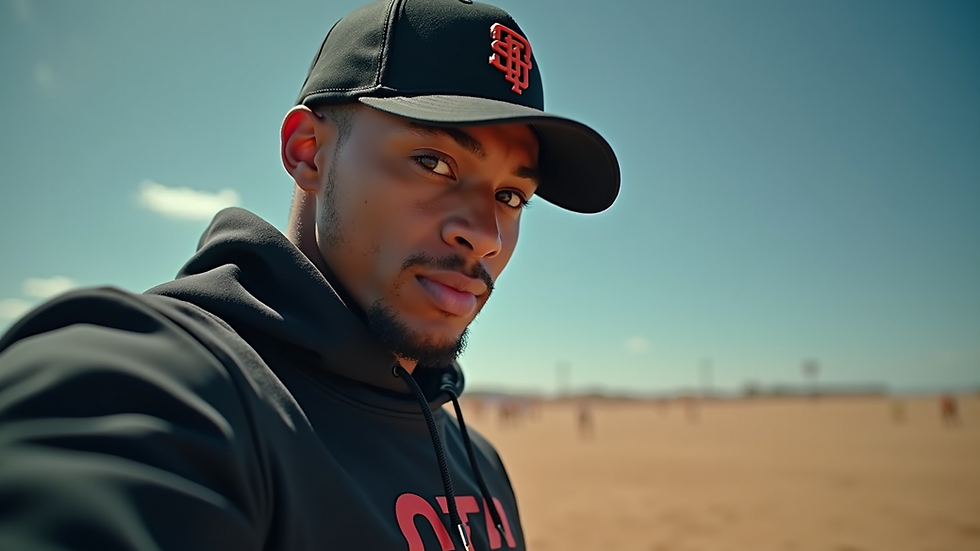Exploring Athlete Branding: Insights and Strategies
- tmeeks992
- Aug 14
- 5 min read
In today's sports world, athletes are not just competitors; they are brands. The rise of social media and digital platforms has transformed how athletes connect with fans and promote themselves. This shift has created new opportunities for athletes to build their personal brands.
Understanding athlete branding is essential for anyone involved in sports, whether you are an athlete, coach, or fan. This post will explore the key elements of athlete branding, effective strategies, and real-life examples that illustrate how athletes can successfully create and manage their brands.
What is Athlete Branding?
Athlete branding refers to the process of creating a unique identity for an athlete. This identity encompasses their personality, values, and image. A strong brand can help athletes stand out in a crowded market, attract sponsorships, and connect with fans on a deeper level.
Athlete branding is not just about logos or merchandise. It involves storytelling, authenticity, and engagement. Athletes who effectively communicate their brand can build loyal followings and create lasting impressions.
The Importance of Personal Branding for Athletes
Personal branding is crucial for athletes for several reasons:
Visibility: A strong brand increases an athlete's visibility. This can lead to more opportunities, such as endorsements and partnerships.
Connection: Athletes with a clear brand can connect with fans on a personal level. This connection fosters loyalty and support.
Longevity: A well-established brand can help athletes maintain relevance even after their playing days are over. Many athletes transition into roles as commentators, coaches, or entrepreneurs.
Financial Opportunities: A strong personal brand can lead to lucrative sponsorship deals and business ventures. Brands are more likely to partner with athletes who have a clear and engaging identity.
Key Elements of Athlete Branding
To build a successful athlete brand, several key elements should be considered:
Authenticity
Authenticity is the cornerstone of any strong brand. Athletes should be true to themselves and their values. Fans can easily spot inauthenticity, which can damage an athlete's reputation.
For example, LeBron James has built his brand around his commitment to social justice and community engagement. His authenticity resonates with fans and has helped him secure numerous endorsements.
Storytelling
Every athlete has a unique story. Sharing this story can create a deeper connection with fans. Athletes should highlight their journey, struggles, and triumphs.
Consider the case of Serena Williams. Her story of overcoming obstacles and breaking barriers in tennis has inspired many. By sharing her experiences, she has built a powerful brand that goes beyond sports.
Engagement
Engaging with fans is vital for building a brand. Athletes should use social media platforms to interact with their followers. This can include sharing behind-the-scenes content, responding to comments, and participating in discussions.
For instance, Kevin Durant frequently engages with fans on Twitter. His willingness to share his thoughts and experiences has helped him cultivate a loyal following.
Visual Identity
A strong visual identity can enhance an athlete's brand. This includes logos, color schemes, and overall aesthetics. Athletes should ensure that their visual identity aligns with their personal values and story.
An excellent example is Tom Brady. His brand features a sleek and modern design that reflects his status as one of the greatest quarterbacks of all time.

Consistency
Consistency is key in branding. Athletes should maintain a consistent message across all platforms. This includes social media, interviews, and public appearances.
For example, Russell Wilson consistently promotes positivity and teamwork. His brand message is clear and resonates with fans, making him a sought-after figure in sports and beyond.
Strategies for Building an Athlete Brand
Building a personal brand requires strategic planning and execution. Here are some effective strategies for athletes:
Define Your Brand
Before promoting a brand, athletes should take time to define it. This includes identifying core values, target audience, and unique selling points.
Athletes should ask themselves questions like:
What do I stand for?
Who do I want to reach?
What makes me unique?
Leverage Social Media
Social media is a powerful tool for athlete branding. Athletes should choose platforms that align with their audience and brand.
For example, Instagram is ideal for visual storytelling, while Twitter is great for real-time engagement. Athletes should create content that reflects their brand and engages their followers.
Collaborate with Brands
Partnering with brands can enhance an athlete's visibility and credibility. Athletes should seek partnerships that align with their values and resonate with their audience.
For instance, Dwyane Wade has collaborated with various brands, including Li-Ning, to create a unique line of sneakers. These partnerships have helped him expand his brand beyond basketball.
Create Valuable Content
Athletes should focus on creating valuable content for their audience. This can include blog posts, videos, podcasts, or social media updates.
By providing valuable insights and entertainment, athletes can establish themselves as thought leaders in their field.
Network and Build Relationships
Networking is essential for building a brand. Athletes should connect with other athletes, influencers, and industry professionals.
Building relationships can lead to collaboration opportunities and increased visibility.
Real-Life Examples of Successful Athlete Branding
Several athletes have successfully built their brands, serving as excellent examples for others.
Michael Jordan
Michael Jordan is a prime example of successful athlete branding. His partnership with Nike led to the creation of the iconic Air Jordan line.
Jordan's brand transcends basketball, becoming a cultural phenomenon. His commitment to excellence and competitive spirit resonates with fans worldwide.
Ronda Rousey
Ronda Rousey has built a powerful brand as a mixed martial artist and actress. Her journey from judo champion to UFC superstar showcases her determination and resilience.
Rousey's brand emphasizes empowerment and breaking barriers, making her a role model for many.
Tom Brady
Tom Brady's brand is synonymous with success and longevity. His dedication to fitness and performance has set him apart in the NFL.
Brady's brand extends beyond football, with ventures in health and wellness, including his TB12 brand.
The Future of Athlete Branding
As the sports landscape continues to evolve, athlete branding will play an increasingly important role.
With the rise of new technologies and platforms, athletes will have more opportunities to connect with fans and promote their brands.
Emerging trends, such as virtual reality and augmented reality, may also shape how athletes engage with their audience.
Athletes who adapt to these changes and embrace innovation will likely thrive in the future.
Final Thoughts on Athlete Branding
Athlete branding is a powerful tool that can shape an athlete's career and legacy. By understanding the key elements of branding and implementing effective strategies, athletes can create a lasting impact.
As the sports world continues to evolve, the importance of personal branding will only grow. Athletes who embrace their unique stories and engage with their fans will stand out in an increasingly competitive landscape.
Building a brand is not just about marketing; it is about authenticity, connection, and creating a legacy that resonates with others.


Comments